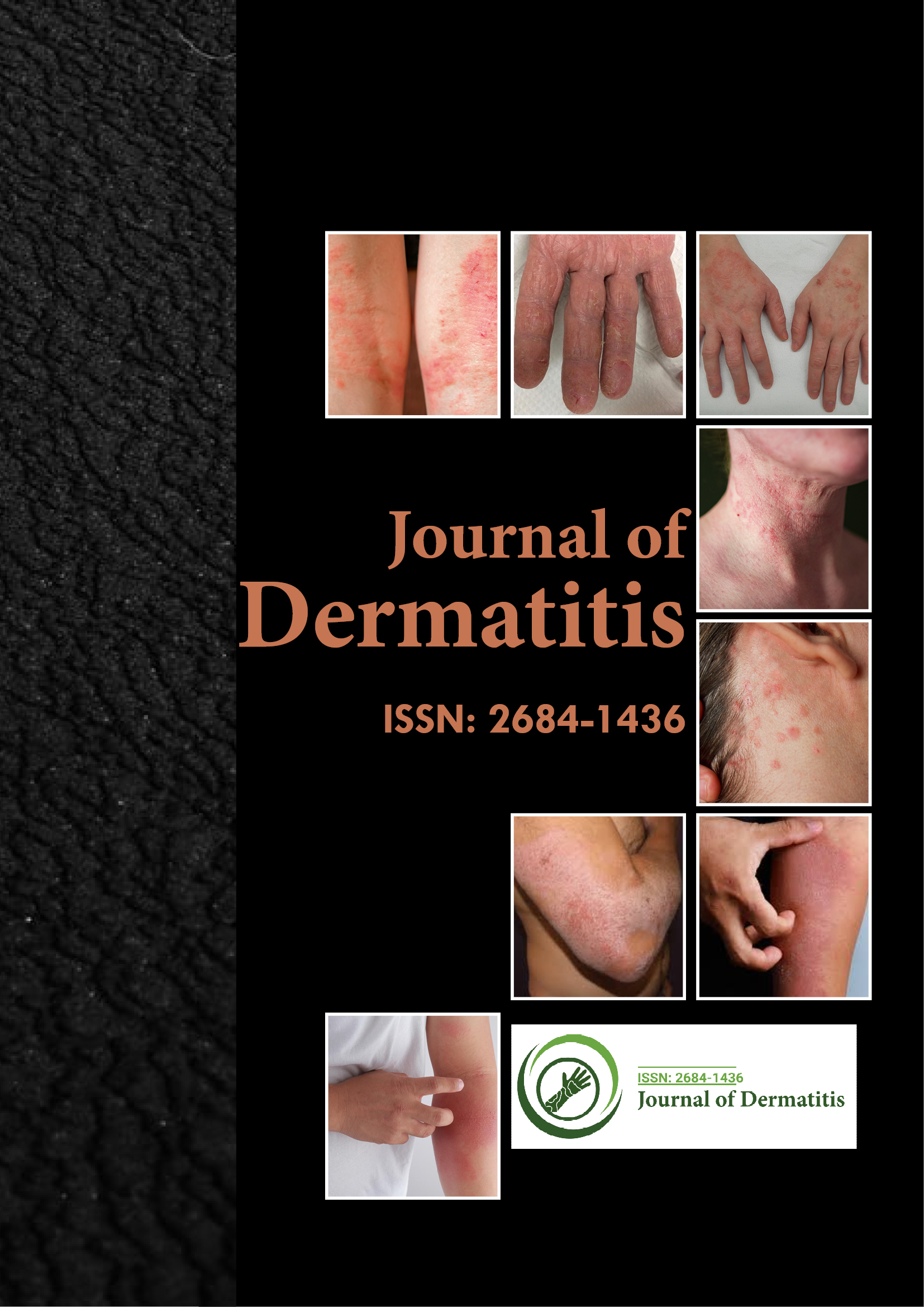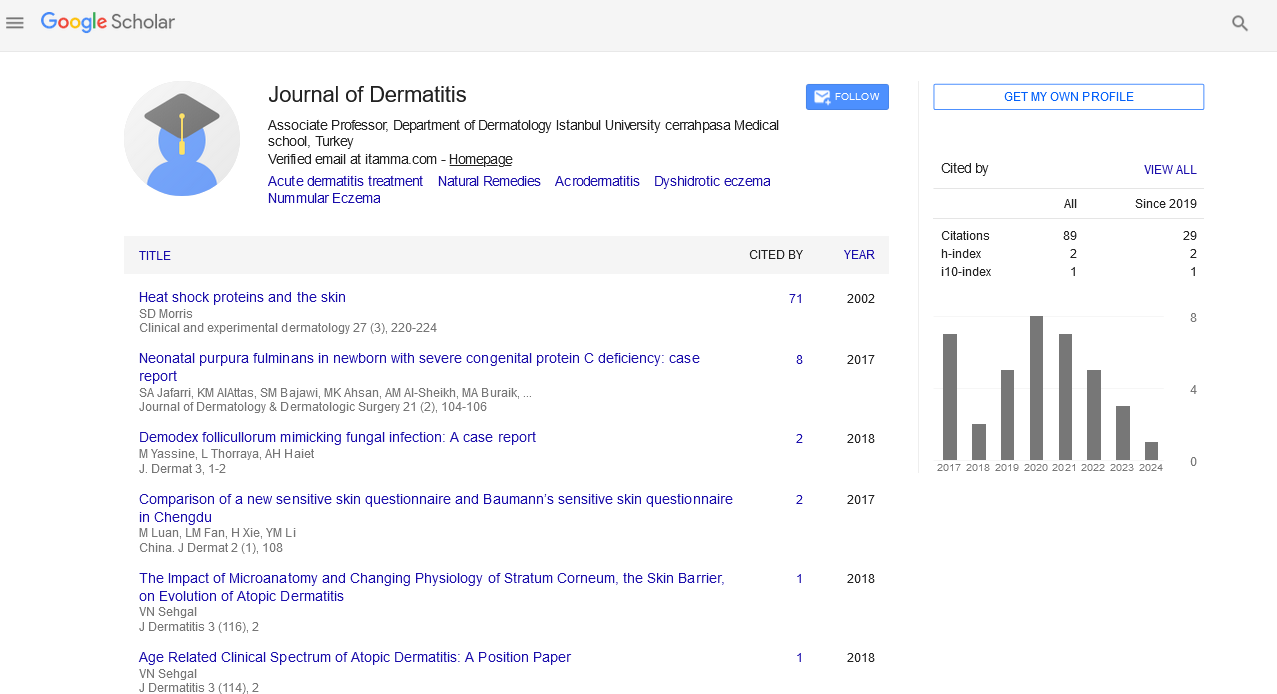Indexed In
- RefSeek
- Hamdard University
- EBSCO A-Z
- Euro Pub
- Google Scholar
Useful Links
Share This Page
Journal Flyer

Open Access Journals
- Agri and Aquaculture
- Biochemistry
- Bioinformatics & Systems Biology
- Business & Management
- Chemistry
- Clinical Sciences
- Engineering
- Food & Nutrition
- General Science
- Genetics & Molecular Biology
- Immunology & Microbiology
- Medical Sciences
- Neuroscience & Psychology
- Nursing & Health Care
- Pharmaceutical Sciences
Opinion Article - (2024) Volume 9, Issue 1
Skin Wound Infections: Causes and Complications
Fang Lie*Received: 02-Mar-2024, Manuscript No. JOD-24-26058; Editor assigned: 05-Mar-2024, Pre QC No. JOD-24-26058 (PQ); Reviewed: 21-Mar-2024, QC No. JOD-24-26058; Revised: 27-Mar-2024, Manuscript No. JOD-24-26058 (R); Published: 05-Apr-2024, DOI: 10.35248/2684-1436.24.9.235
Description
The Complexities of skin wound infections examines the many steps that lead to an infection in a wound. The largest organ in the body, the skin, is essential for both healing and defense. When weakened, wounds can become breeding grounds for microorganisms, mostly bacteria, which can cause inflammation and immunological reactions that impede the healing process. If infections are left untreated, they could spread, become systemic, and damage deeper organs or tissues.
Diabetes, weakened immune systems, and poor circulation are a few factors that might impede the healing process and raise the risk of wound infections. To avoid problems, wounds must be properly cleaned, disinfected, and treated with antibiotics. More serious infections may take weeks to recover, depending on treatment and preventative measures, whereas less serious infections may go away in a week.
Protecting muscles, organs, and other bodily components, the skin is the biggest organ in the human body and the first line of defense. It is made up of multiple layers of skin cells that work together to regulate body temperature and fluids. Although most diseases and injuries can heal the skin on its own, there are others that can't. A complex series of cellular and metabolic activities play a major role in the extremely dynamic process of wound healing. The growth and dissemination of microorganisms, primarily bacteria, within a skin break or wound is known as a skin wound infection. These infections set off the body's immune system, induce inflammation and tissue damage, and impede the healing process.
If left untreated, many skin infections worsen and spread farther into the body from their original site, such as an infected hair follicle or scratch. Certain infections can become systemic, spreading to blood and other organs. Microbes can cause wound or skin infections if there is a break in the skin or if the immune system is compromised. The integrity of the skin and tissues is broken by wounds, which might include scratches, scrapes, deeper cuts, punches, burns, and superficial cuts that require medical attention. Larger wounds take longer to heal and may even cause more tissue damage. During the healing process, a process known as contracture draws the edges of a wound together, aiding in the closure of tiny skin cuts and injuries.
Large wounds that are just starting to heal may tighten up around the joints, especially those in the hands, elbows, neck, and shoulders. This can restrict or even completely stop movement in the affected area. Certain cuts don't go through all the layers of the skin, so they will ultimately heal. However, if a burn damages a significant portion of the skin, the skin cannot regenerate normally. Hair pigment, sweat glands, and oil glands may regenerate if the skin's underlying components survive the injury; if not, the newly formed skin may be devoid of certain traits. Illnesses can become extremely difficult to cure and even develop into chronic illnesses if they spread deeply into the body and affect areas with poor circulation, such as the bones.
Individuals who have underlying medical issues are more likely to experience delayed wound healing and increased risk of wound infections. Wound infections also impede the healing process and result in further tissue damage. A few prime examples of factors that raise the risk of wound infections include diabetes, impaired immune function, reduced mobility and immobility, and poor blood circulation. While minor wound infections might be irritating, they often recover in a week. Larger or deeper infections, on the other hand, may take longer to heal-up to two weeks or even a month-depending on the treatment used and the need for appropriate precautions.
When someone has an open wound, they need to take certain measures. These include cleaning their hands with soap and water, taking off any jewelry that may be covering the wound, applying pressure to stop the bleeding, applying Band-Aids or adhesive bandages, and applying antibiotic ointments. An unsterile closed wound has the potential to harbor bacteria and result in further infections. Consequently, until the infection goes away or the wound can be cleaned, a person with an unclean wound should be left open.
Citation: Lie F (2024) Skin Wound Infections: Causes and Complications. J Dermatitis. 9:235.
Copyright: © 2024 Lie F. This is an open-access article distributed under the terms of the Creative Commons Attribution License, which permits unrestricted use, distribution, and reproduction in any medium, provided the original author and source are credited.

